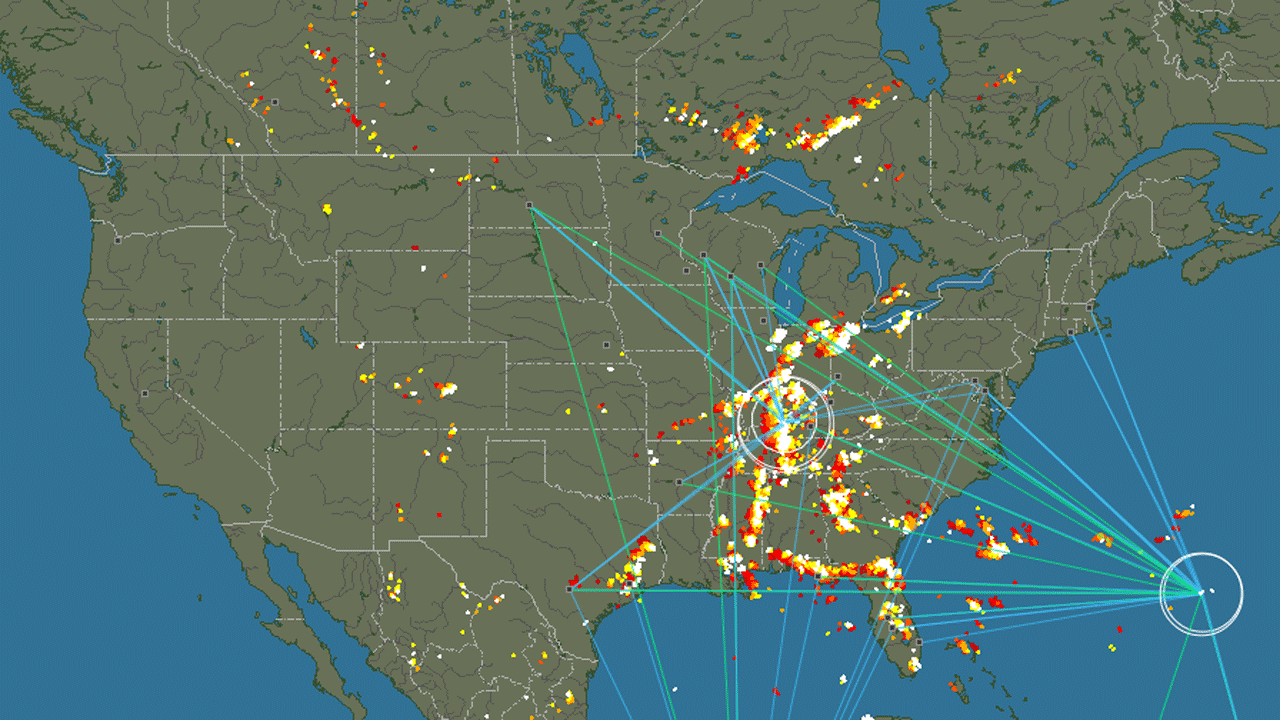A small German company Blitzortung has created a real time map of lightning strikes over much of the world, all for free. Their spread out detectors help them determine the location of a lightning strike in seconds. The Vane explains:
Let’s say there’s a thunderstorm over Dallas and a brilliant bolt of lightning strikes the center of the city. Most (if not all) of the detectors nearby sense the bolt. Depending on how many sensors detected the bolt, the system can triangulate the location of the lightning to within a few hundred to a few thousand feet of where it struck, and it plots the point on a map. From the strike to plotting it on the map can take as little as four seconds.
Lightning is represented on their maps as concentric circles emanating from a point, and lines are drawn to each strike from the detectors it triggered. Each time a strike hits the site plays a small clicking sound, a clever way to feel a small simulation of the much louder noise that’s happening on the ground.
Blitzortung collects an immense amount of data. You can see maps of historic lightning activity for a designated period of time. This shows the patterns of concentrated strikes in certain locations.
North and South America have seen about 4,504,896 lightning strikes so far this year, and the “hot spot” for activity has been the northern Gulf Coast around Mobile and Pensacola, where tens of thousands of lightning strikes occurred every hour for over half a day during a major flash flood event this past April.
The map is hard to take your eyes off of, and it’s strangely comforting to imaging these storms floating out there, far away, naturally appearing and dispersing without any regard for the people below.


